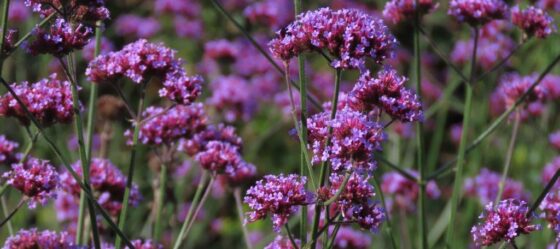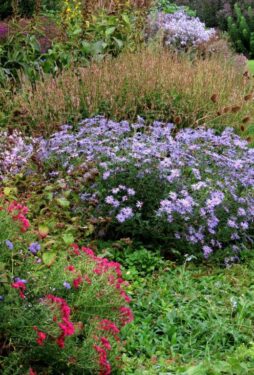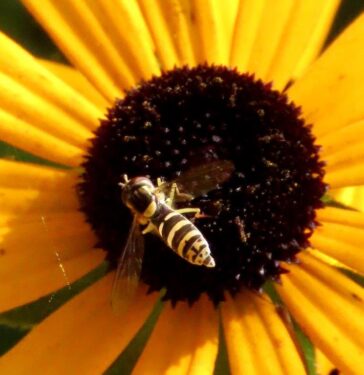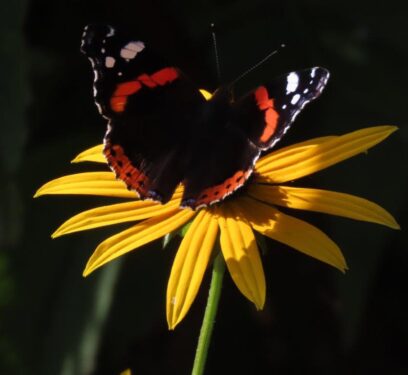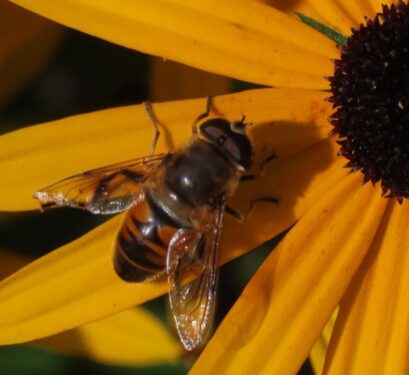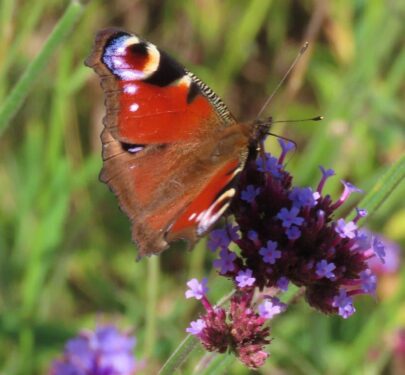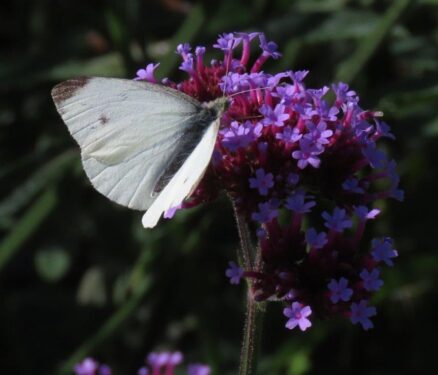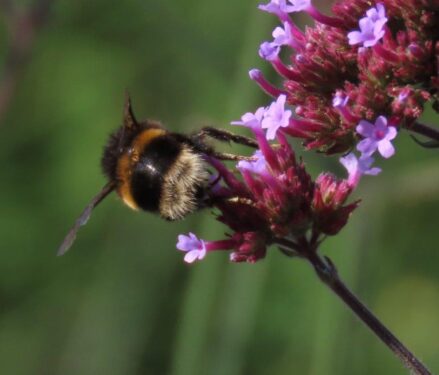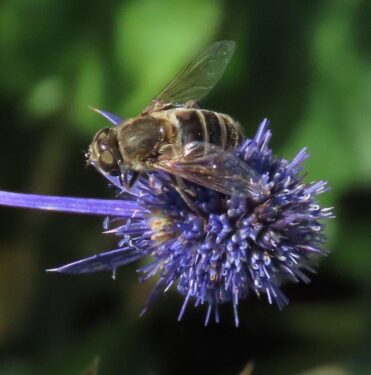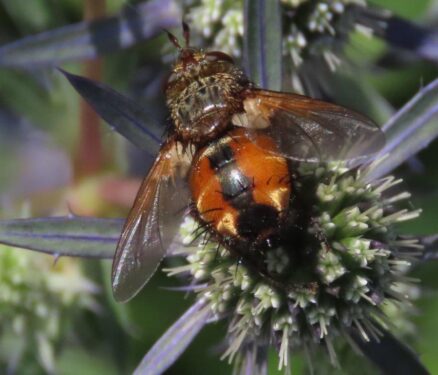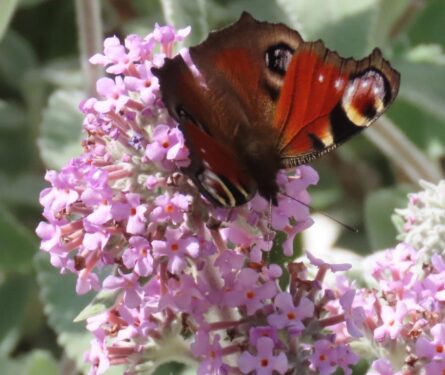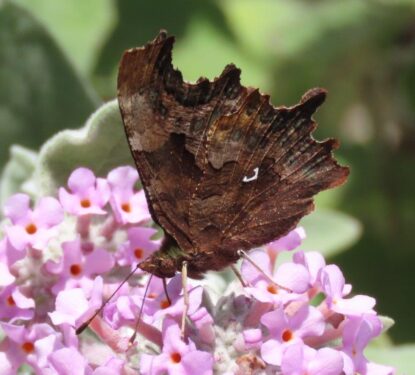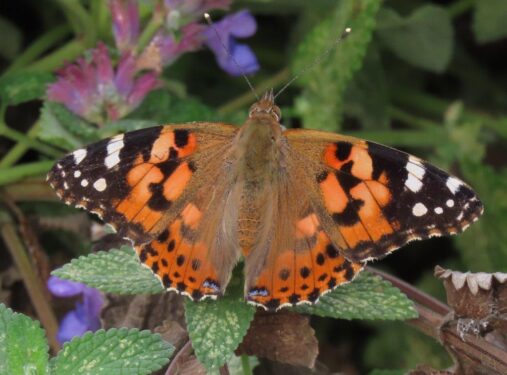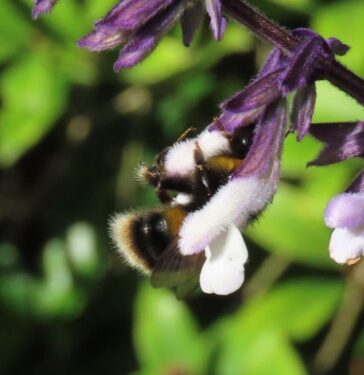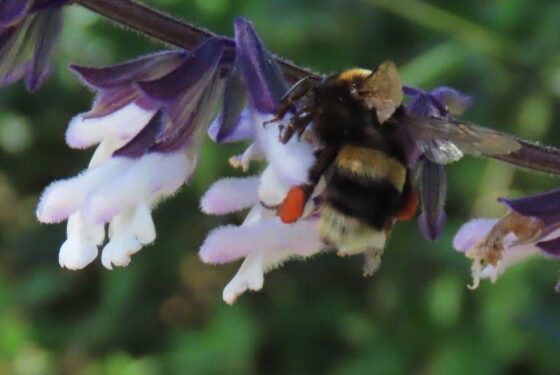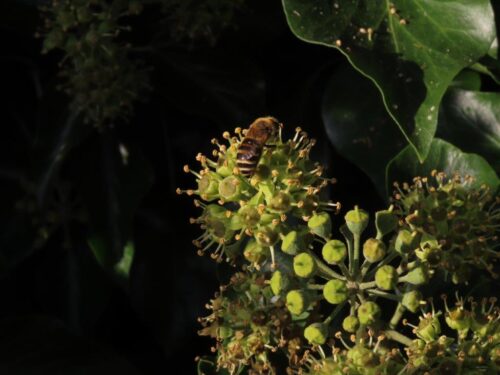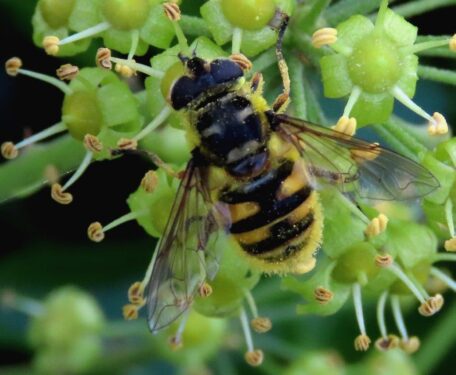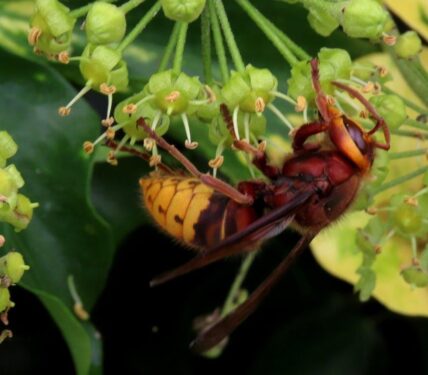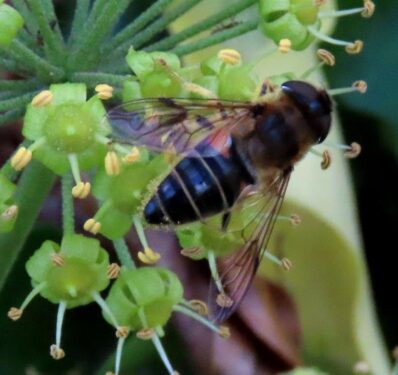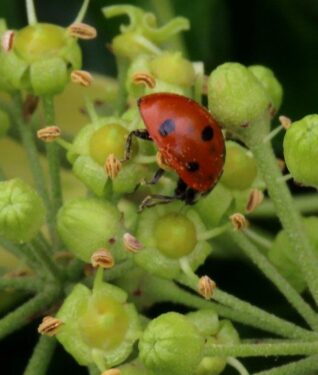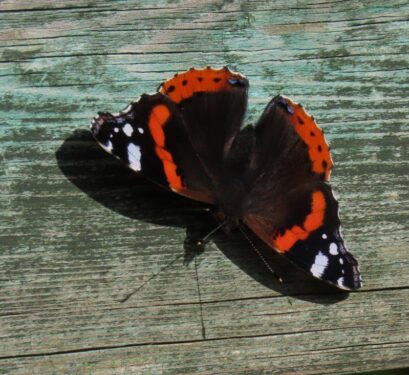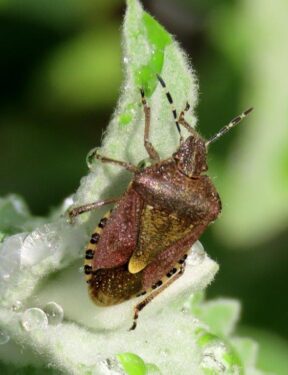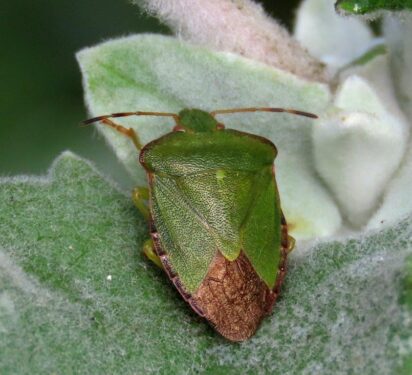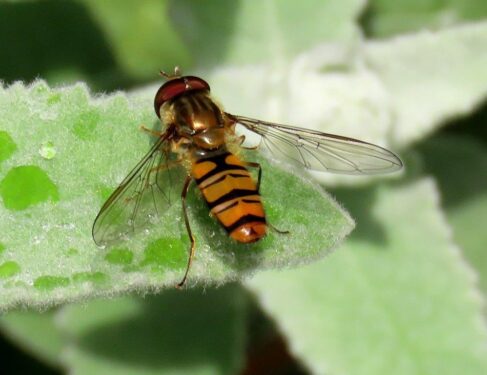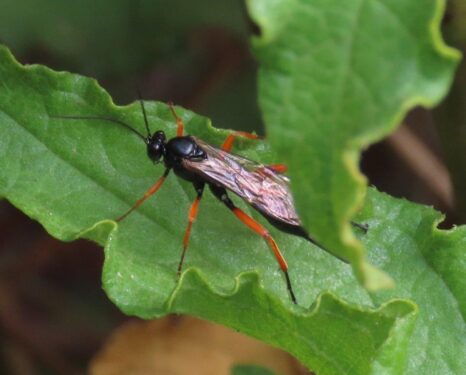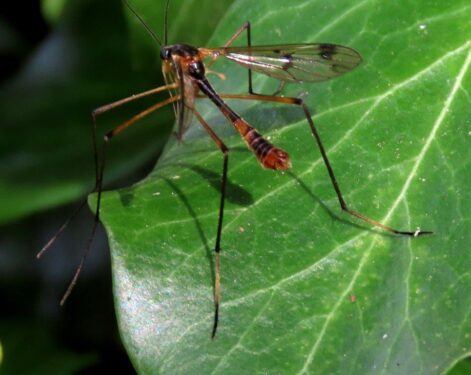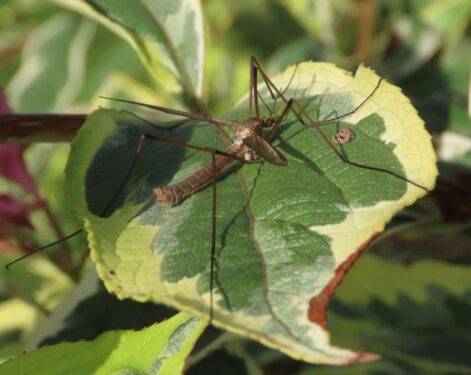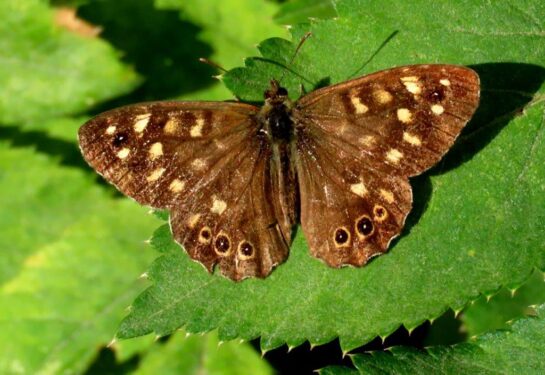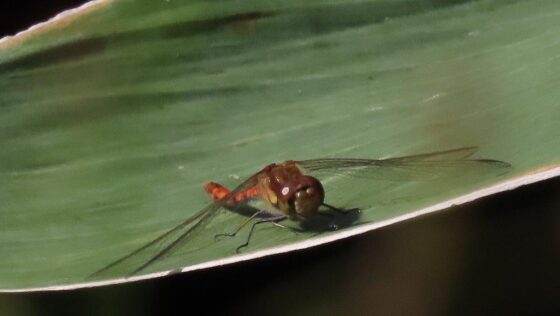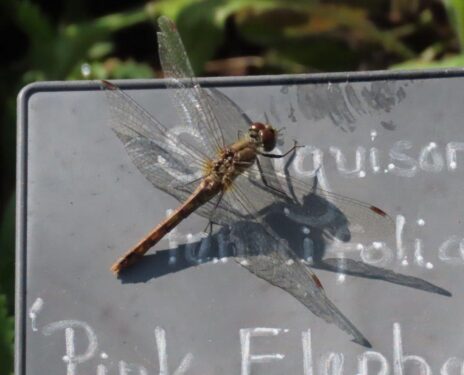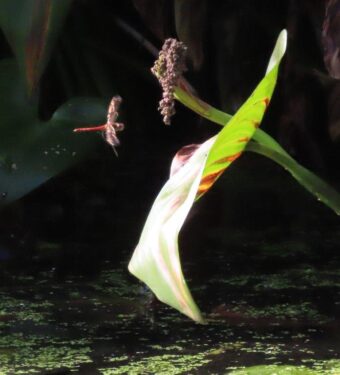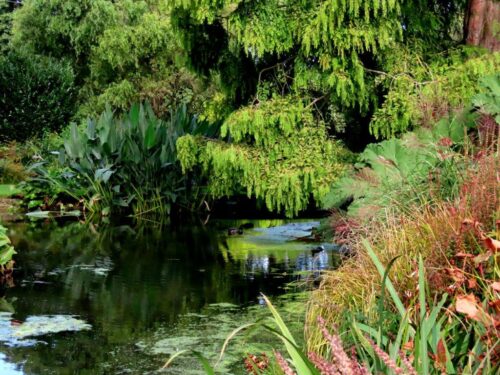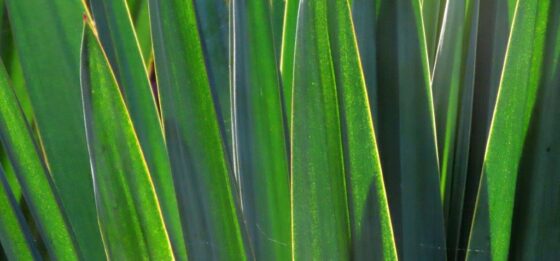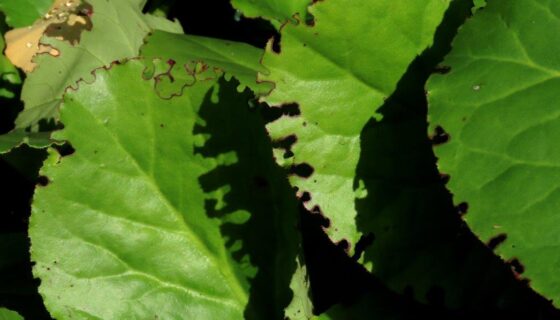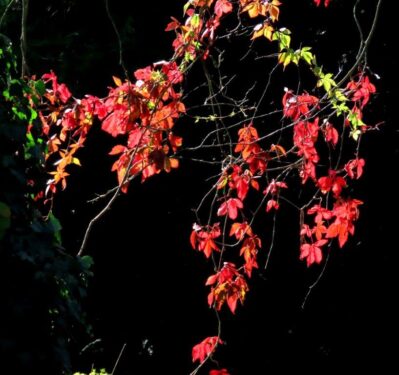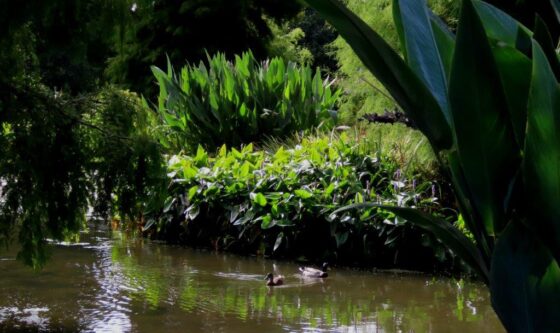It was a breezy, autumnal start for the final Wandering Naturalist event of the year, but the sun soon came out and brought the gardens to life with the hum of insects.
As is typical at this season, it was members of the daisy family that were the major draw for insects seeking nectar and pollen, from Black-eyed Susans and Jerusalem Artichokes to Mexican Coneflowers and (the ones that will go on and on right into the depths of winter), Michaelmas Daisies.
Verbena bonariensis too, its wispy shoots punctuating many of the beds, and a magnet for bees and butterflies in particular, together with a fleeting Hummingbird Hawk-moth (sadly not photographed!):
Other star performers for those who joined me on the walks were plants sending out a second flush of flowers, as for example Eryngium planum in the Reservoir Garden, attracting hoverflies and parasitic flies in abundance…
… and on Beth’s House, Buddleia crispa with its second blooming amply demonstrating the benefits that can be achieved from dead-heading after the first flush…
… while sages and calamints just go on and on, today hosting a pristine Painted Lady, while the large-flowered forms wrapped bumblebees in their pollenial embrace.
Otherwise the baton of the summer-flowering relay has been passed on firmly to Ivy, arguably (and I would suggest indisputably) THE most important plant for wildlife there is, from its autumn flowers feeding myriad insects to its February-ripe berries, a lifeline for birds, as well as dense foliage and twisted growth for nesting, shelter and hibernation. Among the many insects using it were Ivy Bees, Batman Hoverflies and some very impressive Hornets, in between bouts of scraping wood fibres off dead trees with which to enlarge their nests.
Of course, as the power of the Sun is waning, insects are just as likely to be found basking, to warm up for their essential activities of feeding and breeding. Any surface facing south will do, from large flat leaves to paths, posts and other structures:
The more active the insect the more it needs to bask, and some of the most obvious baskers are the dragonflies, needing vast amounts of warmth and energy to feed on flying insects:
Aside from the insects, Chiffchaffs were singing as though it were spring, Swallows and Meadow Pipits migrating south overhead, and there was the amazing sight of a Cormorant overhead, using thermals from the Gravel Garden to gain altitude!
There may be fewer insects to see from now on, but they will still be there, at least until the first frosts. But don’t let that stop you visiting the garden: flowers may be fading, and greens bronzing, but there is something to see all the time and in any weather.
That’s all from the Wandering Naturalist for now, but hopefully I will be back next year. Thank you for reading, thank you for joining me on the walks, and thank you for caring about garden insects, the little things that help our world go round.
Blogs of previous events in this series can be found at:
The Wild Side of Beth Chatto Gardens: a butterfly bonanza! | Chris Gibson Wildlife
The Wild Side of Beth Chatto Gardens: the steamy jungles of Essex!! | Chris Gibson Wildlife
The Wild Side of Beth Chatto Gardens: the slide into Autumn… | Chris Gibson Wildlife
The Wild Side of Beth Chatto Gardens: after the rain…….. | Chris Gibson Wildlife
The Wild Side of Beth Chatto Gardens: September sunlight | Chris Gibson Wildlife
Each one is fully illustrated with photos taken on the day; if anyone wants to know the identity of anything depicted, please feel free to contact me through the Contact tab.
Visit the Beth Chatto Gardens and be inspired to Rewild your Mind!
AND JUST ARRANGED, in 2024 I will be running similar events on the following dates:
April 19th
May 17th
June 21st
July 19th
August 2nd
August 16th
September 20th
All weather dependent, and between 1100 and 1300.
